
Keywords: gene drive review

|
Teach Me in 10 – Gene Drive Research with Dr. Jennifer BaltzegarJ. Baltzegar, Technology Networks, 2020.
Dr Baltzegar teaches us about how the maturation of genetic engineering approaches has advanced gene drives, the two different strategies for gene drives and some of the key questions surrounding the application of gene drives in society. Keywords: gene drive review, gene drive synthetic, popular press |

|
Anthony James / Mosquito ModificationBig Picture Science, SETI Institute, 2020.
Anthony James, vector biologist at the University of California, Irvine, describeshow we might genetically modify mosquitoes to make them unable to pass malaria on to humans. Keywords: gene drive review, gene drive synthetic, popular press |

|
An argument for gene drive technology to genetically control populations of insects like mosquitoes and locustsI. Ronai and B. Lovett, The Conversation, 2020.
The fate of society rests in part on how humans navigate their complicated relationship with insects – trying to save “good” insects and control “bad” ones. Some insects, like mosquitoes, bite people and make them sick – remember Zika? Now the U.S. mosquito season is ... Keywords: gene drive review, gene drive synthetic, popular press |

|
Soon we’ll be able to engineer the wild, can the policies keep up with the science?M. Montague and A. Kobokovich, The Hill, 2020.
Humans have been able to genetically alter the world around them for thousands of years. With the domestication of dogs at least 14,000 years ago, genetically modified organisms (GMOs) have been a constant feature of human society; only recently have we gained the ability to ... Keywords: gene drive review, gene drive synthetic, popular press |
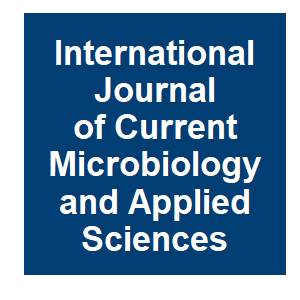
|
Gene Drive: Can this be the Future of Agricultural Pest Management?P. Mondal, U. Mohapatra and M. Ganguly, International Journal of Current Microbiology and Applied Sciences, 9. 2020.
A world free of hunger may be possible when the agricultural production exceeds the global demand for the food. In the era of increasing population, the need for increased food production can be attainable by managing the destructive pests of the agricultural and horticultural ... Keywords: gene drive review, gene drive synthetic, popular press |

|
Gene Drives: Pursuing opportunities, minimizing riskK. L. Warmbrod, A. Kobokovich, R. West, G. Ray, M. Trotochaud and M. Montague, Center for Health Security, 2020.
This study analyzed the current state of gene drive technologies, the ways in which they might be deployed in the field, and the state of regulatory policy governing their development. Keywords: gene drive review, gene drive synthetic, popular press |
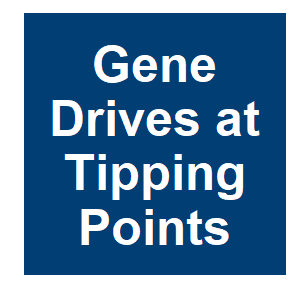
|
Alternative Techniques and Options for Risk Reduction of Gene DrivesBernd Giese, Arnim von Gleich and Johannes L. Frieß, Gene Drives at Tipping Points, 2020.
In this chapter, we analyse and compare different types of gene drives as well as promising alternative approaches that may provide a reduced risk. Keywords: gene drive review, gene drive synthetic, popular press |

|
Technology CharacterisationJohannes L. Frieß, Bernd Giese, Arnim von Gleich, Gene Drives at Tipping Point, 2020.
In recent years, innovation in genetic engineering brought forth a number of technologies to manipulate the fate of entire wild typeWild type populations. These technologies rely on the dissemination of synthetic genetic elements within a population of sexually reproducing ... Keywords: gene drive review, gene drive synthetic, popular press |

|
Gene drives as a gene modification tool. A scientific overview.Ashan Ali, TechnologyTimes, 2020.
We have heard a lot of genes and chromosomes. But we have not heard about gene drives. In this article, we are going to get an overview of gene drives. Gene Drive is basically a genetic engineering technique that helps in the accumulation and propagation of a particular set of ... Keywords: gene drive review, gene drive synthetic, popular press |

|
What is a gene drive?Donayvn Coffer, LiveScience, 2020.A gene drive is a type of genetic engineering technique that modifies genes so that they don’t follow the typical rules of heredity. Gene drives dramatically increase the likelihood that a particular suite of genes will be passed onto the next generation, allowing the genes to ... Keywords: gene drive review, gene drive synthetic, popular press |

|
Gene editing and the war against malariaE. Bier and E. Sobber, American Scientist, 102:162. 2020.
Malaria is a devastating disease transmitted from person to person by mosquitoes. It kills more than 400,000 people per year, more than half of those deaths being children 5 years old or younger. CRISPR (clustered regularly interspaced short palindromic repeats) is a new ... Keywords: gene drive review, gene drive synthetic, popular press |
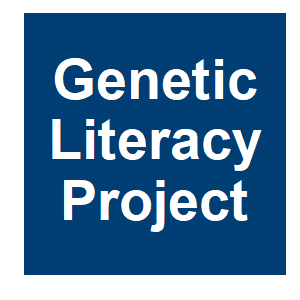
|
The risks of using gene drives to get rid of ‘pesky species’R. Lewis, Genetic Literacy Project, 2020.
The mammals of New Zealand have long posed a threat to native species. The Predator Free 2050 program is an effort to rid the island of these invaders – including using the tools of CRISPR-based genome editing to create a gene drive to jumpstart extinctions. It’s a very ... Keywords: gene drive review, gene drive synthetic, popular press |

|
A unifying approach to gene driveP. Verma, R. Reeves and C. S. Gokhale, bioRxiv, 2020.02.28.970103. 2020.
Synthetic gene drive technologies aim to spread transgenic constructs into wild populations even when they impose organismal fitness disadvantages. The properties of gene drive constructs are diverse and depend on their molecular construction, and differential selection pressure ... Keywords: gene drive review, gene drive synthetic, popular press |
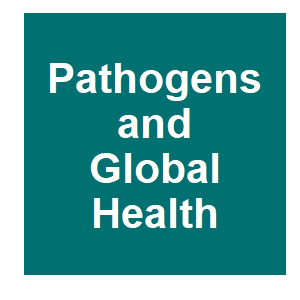
|
Public health concerns over gene-drive mosquitoes: will future use of gene-drive snails for schistosomiasis control gain increased level of community acceptance?D. O. Famakinde, Pathogens and Global Health, 2020.
With the advent of CRISPR (clustered regularly interspaced short palindromic repeat)-based gene drive, present genetic research in schistosomiasis vector control envisages the breeding and release of transgenic schistosome-resistant (TSR) snail vectors to curb the spread of the ... Keywords: gene drive review, gene drive synthetic, popular press |
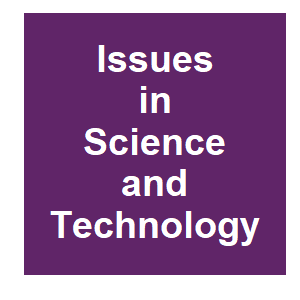
|
Gene Drives: New and ImprovedR. M. Friedman, J. M. Marshall and O. S. Akbari, Issues in Science and Technology, 36:1-7. 2020.
Our goal here is to describe the various options under development in nontechnical terms for a policy-making audience, review how far along each is, and examine the broader context of how this new suite of technologies compares with other available alternatives. Early engagement ... Keywords: gene drive review, gene drive synthetic, popular press |

|
What is gene drives about?EFSA, EFSAchannel, 2020.
EFSA expert Les Firbank, specialised in sustainable agriculture, talks about gene drives. Recent development in molecular biology are allowing scientists to engineer gene drives and use them to push desirable genes into target populations. How does that work? Learn more about ... Keywords: gene drive review, gene drive synthetic, popular press |
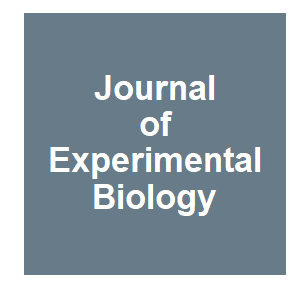
|
Progress towards engineering gene drives for population controlR. R. Raban, J. M. Marshall and O. S. Akbari, The Journal of Experimental Biology, 223:jeb208181. 2020.
Vector-borne diseases, such as dengue, Zika and malaria, are a major cause of morbidity and mortality worldwide. These diseases have proven difficult to control and currently available management tools are insufficient to eliminate them in many regions. Gene drives have the ... Keywords: gene drive review, gene drive synthetic, popular press |
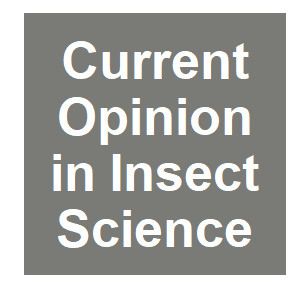
|
Gene technologies in weed management: a technical feasibility analysisN. Kumaran, A. Choudhary, M. Legros, A. W. Sheppard, L. G. Barrett, D. M. Gardiner and S. Raghu, Current Opinion in Insect Science, 38:6-14. 2020.
With the advent of new genetic technologies such as gene silencing and gene drive, efforts to develop additional management tools for weed management is gaining significant momentum. These technologies promise novel ways to develop sustainable weed control options because gene ... Keywords: gene drive review, gene drive synthetic, popular press |

|
Gene Drive FilmSave Our Seeds, , 2020.
This is a video based on the findings in GENE DRIVES: A report on their science, applications, social aspects, ethics and regulations which you can find here. There was a Symposium on May 24, 2019 that covers the topics in the report and the presentations at that symposium can ... Keywords: gene drive review, gene drive synthetic, popular press |
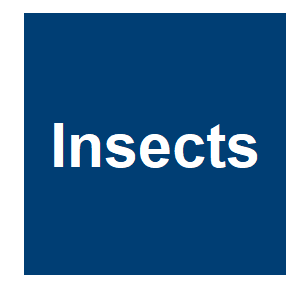
|
Antiviral effectors and gene drive strategies for mosquito population suppression or replacement to mitigate arbovirus transmission by Aedes aegyptiA. E. Williams, A. W. E. Franz, W. R. Reid and K. E. Olson, Insects, 11:1-18. 2020.
The mosquito vector Aedes aegypti transmits arthropod-borne viruses (arboviruses) of medical importance, including Zika, dengue, and yellow fever viruses. Controlling mosquito populations remains the method of choice to prevent disease transmission. Novel mosquito control ... Keywords: gene drive review, gene drive synthetic, popular press |

|
The gene drive dilemma: We can alter entire species but should we?J. Kahn, New York Times Magazine, 2020.One early summer evening in 2018, the biologist Anthony James drove from his office at the University of California, Irvine, to the headquarters of the Creative Artists Agency, a sleek glass-and-steel high-rise in Los Angeles. There, roughly 200 writers, directors and producers ... Keywords: gene drive review, gene drive synthetic, popular press |
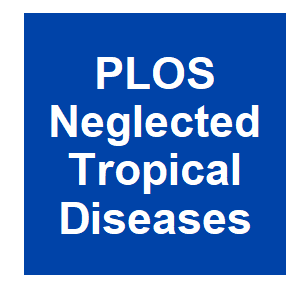
|
Gene drives for schistosomiasis transmission controlT. Maier, N. J. Wheeler, E. K. O. Namigai, J. Tycko, R. E. Grewelle, Y. Woldeamanuel, K. Klohe, J. Perez-Saez, S. H. Sokolow, G. A. De Leo, T. P. Yoshino, M. Zamanian and J. Reinhard-Rupp, PLoS Neglected Tropical Diseases, 13:e0007833. 2019.
Schistosomiasis is one of the most important and widespread neglected tropical diseases (NTD), with over 200 million people infected in more than 70 countries; the disease has nearly 800 million people at risk in endemic areas. Although mass drug administration is a ... Keywords: gene drive review, gene drive synthetic, popular press |
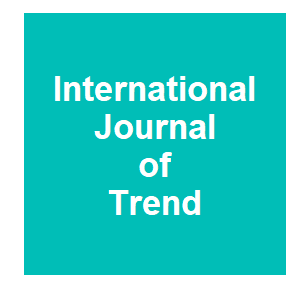
|
The analytical review on futuristic use of CRISPR-Cpf1 aided gene drive technologySatyam, R., N. Singh and T. Bhardwaj, International Journal of Trend in Scientific Research and Development, 2:525-530. 2019.
Organisms edited by gene editing or traditional selective breeding are typically less able to survive and reproduce which effectively prevents those alterations from spreading in the wild populations. This paper focuses on how the CRISPR-Cpf1 system can be used to build a Gene ... Keywords: gene drive review, gene drive synthetic, popular press |
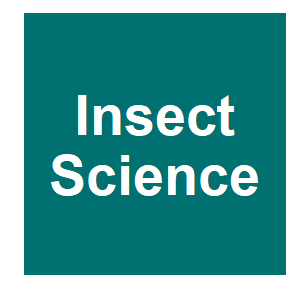
|
Invasive insects: Management methods exploredMcLaughlin, G. M. and P. K. Dearden, Journal of Insect Science, 19:1-9. 2019.
Invasive insect species can act as a plague across the globe, capable of vast expansion and rapid, proliferate reproduction. The spread of pathogens of serious diseases such as malaria and Zika virus and damages to agricultural crops number some of the afflictions invasive ... Keywords: gene drive review, gene drive synthetic, popular press |
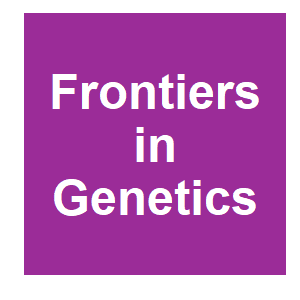
|
Winning the tug-of-war between effector gene design and pathogen evolution in vector population replacement strategiesMarshall, J. M., R. R. Raban, N. P. Kandul, J. R. Edula, T. M. León and O. S. Akbari, Frontiers in Genetics, 10:1072. 2019.
While efforts to control malaria with available tools have stagnated, and arbovirus outbreaks persist around the globe, the advent of clustered regularly interspaced short palindromic repeat (CRISPR)-based gene editing has provided exciting new opportunities for genetics-based ... Keywords: gene drive review, gene drive synthetic, popular press |
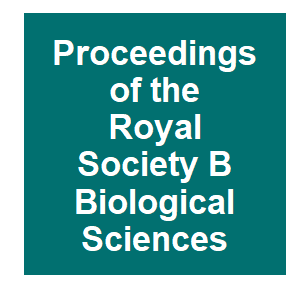
|
Rodent gene drives for conservation: opportunities and data needsJ. Godwin, M. Serr, K. Barnhill-Dilling, D. V. Blondel, P. R. Brown, K. Campbell, J. Delborne, A. L. Lloyd, K. P. Oh, T. A. A. Prowse, R. Saah and P. Thomas, Proceedings of the Royal Society B-Biological Sciences, 286:20191606. 2019.
Invasive rodents impact biodiversity, human health and food security worldwide. The biodiversity impacts are particularly significant on islands, which are the primary sites of vertebrate extinctions and where we are reaching the limits of current control technologies. Gene ... Keywords: gene drive review, gene drive synthetic, popular press |

|
Meiotic drive mechanisms: lessons from DrosophilaC. Courret, C.-H. Chang, K. H.-C. Wei, C. Montchamp-Moreau and A. M. Larracuente, Proceedings of the Royal Society B: Biological Sciences, 286:20191430. 2019.
Meiotic drivers are selfish genetic elements that bias their transmission into gametes, often to the detriment of the rest of the genome. The resulting intragenomic conflicts triggered by meiotic drive create evolutionary arms races and shape genome evolution. The phenomenon of ... Keywords: gene drive review, gene drive synthetic, popular press |

|
Standard deviations: The biological bases of transmission ratio distortionL. Fishman and M. McIntosh, Annual Review of Genetics, 53:347-372. 2019.
The rule of Mendelian inheritance is remarkably robust, but deviations from the equal transmission of alternative alleles at a locus [a.k.a. transmission ratio distortion (TRD)] are also commonly observed in genetic mapping populations. Such TRD reveals locus-specific selection ... Keywords: gene drive review, gene drive synthetic, popular press |
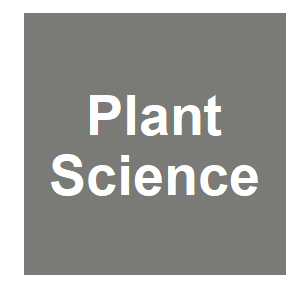
|
Herbicide resistant weeds: A call to integrate conventional agricultural practices, molecular biology knowledge and new technologiesV. E. Perotti, A. S. Larran, V. E. Palmieri, A. K. Martinatto and H. R. Permingeat, Plant Science, 290:110255. 2019.
Herbicide resistant (HR) weeds are of major concern in modern agriculture. This situation is exacerbated by the massive adoption of herbicide-based technologies along with the overuse of a few active ingredients to control weeds over vast areas year after year. Also, many other ... Keywords: gene drive review, gene drive synthetic, popular press |
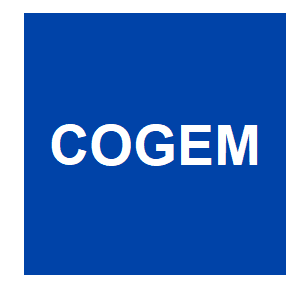
|
Gene Drives: Experience with gene drive systems that may inform an environmental risk assessmentRüdelsheim, PKJS, G., COGEM, 2019.
Gene drives are genetic mechanisms that allow for a trait to be propagated throughout a population; beyond Mendelian inheritance. Active in sexually-reproducing species, they are powerful tools to “drive”; a gene, i.e. increase its frequency, independent of external selection ... Keywords: gene drive review, gene drive synthetic, popular press |

|
A century of bias in genetics and evolutionL. D. Hurst, Heredity, 123:33-44. 2019.
Mendel proposed that the heritable material is particulate and that transmission of alleles is unbiased. An assumption of unbiased transmission was necessary to show how variation can be preserved in the absence of selection, so overturning an early objection to Darwinism. In the ... Keywords: gene drive review, gene drive synthetic, popular press |

|
Gene Drive Symposium-Critical Science SwitzerlandCritical Scientists Switzerland; European Network of Scientists for Social and Environmental Responsibility; Vereinigung Deutscher Wissenschaftler, , 2019.
Keywords: gene drive review, gene drive synthetic, popular press |
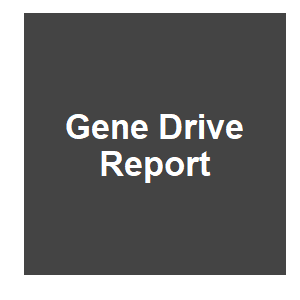
|
Gene Drives: A report on their science, applications, social aspects, ethics and regulationsH. Dressel, Critical Scientists Switzerland; European Network of Scientists for Social and Environmental Responsibility; Vereinigung Deutscher Wissenschaftler, 2019.
Engineered Gene Drives are a new form of genetic modification that provides the tools for permanently modifying or potentially even eradicating species or populations in the wild. Unlike the previous genetically modified organisms (GMOs), gene drive organisms (GDOs) are not meant ... Keywords: gene drive review, gene drive synthetic, popular press |

|
Gene Drive – EsveltiBiology, , 2019.
Dr. Kevin Esvelt explains how CRISPR-based gene drives can be used to spread genetic alterations through wild populations. He discusses strategies to maximize benefit and minimize risk. Keywords: gene drive review, gene drive synthetic, popular press |

|
Gene drives in plants: opportunities and challenges for weed control and engineered resilienceBarrett, LGL, Mathieu; Kumaran, Nagalingam; Glassop, Donna; Raghu, S.; Gardiner, Donald M., Proceedings of the Royal Society B: Biological Sciences, 286:9. 2019.
Plant species, populations and communities are under threat from climate change, invasive pathogens, weeds and habitat fragmentation. Despite considerable research effort invested in genome engineering for crop improvement, the development of genetic tools for the management of ... Keywords: gene drive review, gene drive synthetic, popular press |
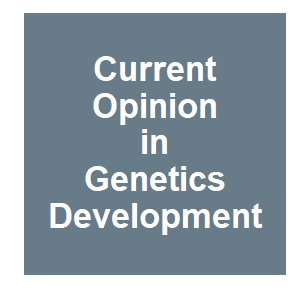
|
Gene conversion generates evolutionary novelty that fuels genetic conflictsDaugherty, MDZ, Sarah E., Current Opinion in Genetics & Development, 58-59:49-54. 2019.
Genetic conflicts arise when the evolutionary interests of two genetic elements are not aligned. Conflicts between genomes (e.g. pathogen versus host) or within the same genome (e.g. internal parasitic DNA sequences versus the rest of the host genome) can both foster ‘molecular ... Keywords: gene drive review, gene drive synthetic, popular press |

|
Population Engineering | Gene Drive by CRISPR-CAS9SciToons, , 2018.
The CRISPR-CAS9 genome editing technology is opening up previously inconceivable possibilities for the manipulation of organisms. Our ethical discussion appears to be far behind the pace of technological development. In this new SciToons video, we address how CRISPR-CAS9 can be ... Keywords: gene drive review, gene drive synthetic, popular press |

|
CRISPR Gene Drive (Complete guide 2019)Every Cell A Universe, , 2018.
Crispr gene drive - malaria cure and a new way to look at conservation. Keywords: gene drive review, gene drive synthetic, popular press |

|
Gene drives could wipe out mosquitoesNew Scientist, , 2018.
This is a short video describing how gene drive is being considered for controlling malaria transmitting mosquitoes in Africa as part of ongoing malaria eradication efforts. Keywords: gene drive review, gene drive synthetic, popular press |

|
Gene DrivesSciLine, SciLine, 2018.
For many years now, scientists have been able to alter genes inside microbial, plant, and animal cells to change organisms’ traits, creating, for example, plants that produce their own protective insecticides and fish that grow to maturity almost twice as fast as normal. But ... Keywords: gene drive review, gene drive synthetic, popular press |

|
Gene Drive TechnologyRick Weiss, SciLine, 2018.
Gene drives represent a new take on genetic engineering offering previously impossible means of fighting disease-spreading insects and invasive species but also raising the specter of ecological disruption. This briefing reviews the current status of gene-drive technology, ... Keywords: gene drive review, gene drive synthetic, popular press |
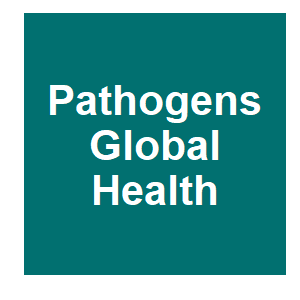
|
Population modification of Anopheline species to control malaria transmissionR. Carballar-Lejarazú and A. A. James, Pathogens and Global Health, 111:424-435. 2018.
Vector control strategies based on population modification of Anopheline mosquitoes may have a significant role in the malaria eradication agenda. They could consolidate elimination gains by providing barriers to the reintroduction of parasites and competent vectors, and allow ... Keywords: gene drive review, gene drive synthetic, popular press |

|
Gene drive to reduce malaria transmission in sub-Saharan AfricaBurt, AC, Mamadou; Crisanti, Andrea; Diabate, Abdoulaye; Kayondo, Jonathan K., Journal of Responsible Innovation, 5:S66-S80. 2018.
Despite impressive progress, malaria continues to impose a substantial burden of mortality and morbidity, particularly in sub-Saharan Africa, and new tools will be needed to achieve elimination. Gene drive is a natural process by which some genes are inherited at a ... Keywords: gene drive review, gene drive synthetic, popular press |

|
Safe Driving: CRISPR and the Gene Drive LandscapeNolan, T, CRISPR Journal, 1:16-18. 2018.
A New Study Highlights Issues About the Capability to Limit Gene Drives in the Field to a Target Population Keywords: gene drive review, gene drive synthetic, popular press |
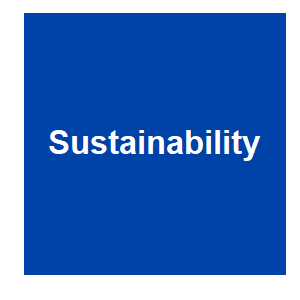
|
Using gene drive technologies to control vector-borne infectious diseasesJames, ST, K. H., Sustainability, 10:4789. 2018.
After years of success in reducing the global malaria burden, the World Health Organization (WHO) recently reported that progress has stalled. Over 90% of malaria deaths world-wide occurred in the WHO African Region. New tools are needed to regain momentum and further decrease ... Keywords: gene drive review, gene drive synthetic, popular press |
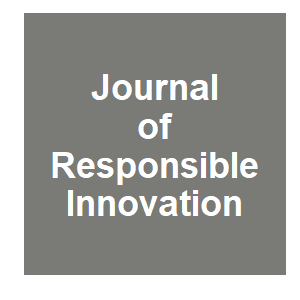
|
Harnessing gene driveMin, JS, Andrea L.; Najjar, Devora; Esvelt, Kevin M., Journal of Responsible Innovation, 5:S40-S65. 2018.
When scientists alter the genome of an organism, we typically reduce its ability to reproduce in the wild. This limitation has prevented researchers from rendering wild insects unable to spread disease, programing pests to ignore our crops, using genetics to precisely remove ... Keywords: gene drive review, gene drive synthetic, popular press |
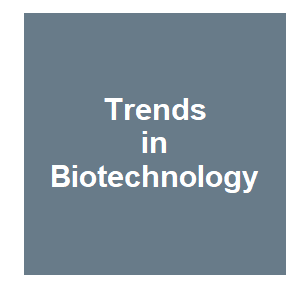
|
CRISPR-based gene drives for pest controlMcFarlane, GRW, C. Bruce A.; Lillico, Simon G., Trends in Biotechnology, 36:130-133. 2018.
Clustered regularly interspaced short palindromic repeats (CRISPR)-based gene drives (GDs) could be used to spread desirable genetic elements through wild populations. With the imminent development of this technology in vertebrates, we believe that it is timely to highlight two ... Keywords: gene drive review, gene drive synthetic, popular press |
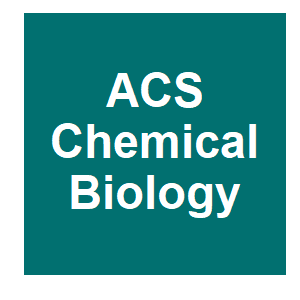
|
Can CRISPR-based gene drive be confined in the Wild? A question for molecular and population biologyMarshall, JMA, Omar S., ACS Chemical Biology, 13:424-430. 2018.
The recent discovery of CRISPR and its application as a gene editing tool has enabled a range of gene drive systems to be engineered with greater ease. In order for the benefits of this technology to be realized, in some circumstances drive systems should be developed that are ... Keywords: gene drive review, gene drive synthetic, popular press |

|
Gene drives to fight malaria: current state and future directionsHammond, A. M. and R. Galizi, Pathogens and Global Health, 111:412-423. 2017.
Self-propagating gene drive technologies have a number of desirable characteristics that warrant their development for the control of insect pest and vector populations, such as the malaria-transmitting mosquitoes. Theoretically easy to deploy and self-sustaining, these tools may ... Keywords: gene drive review, gene drive synthetic, popular press |

|
Gene Drives Explained – Questions about Gene DrivesQuestion., , 2017.
Hi, thanks for watching on the channel Question, where we seek to better understand scientific breakthroughs by asking and answering questions. Today’s video topic is on gene drives - a way to increase the frequency of an allele in a population. Gene drives work hand in hand ... Keywords: gene drive review, gene drive synthetic, popular press |
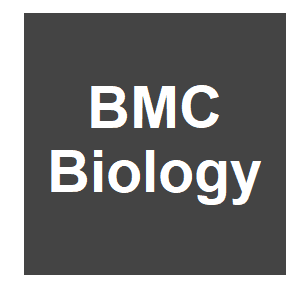
|
How driving endonuclease genes can be used to combat pests and disease vectorsGodfray, HCJN, A.; Burt, A., BMC Biology, 15:81. 2017.
Driving endonuclease genes (DEGs) spread through a population by a non-Mendelian mechanism. In a heterozygote, the protein encoded by a DEG causes a double-strand break in the homologous chromosome opposite to where its gene is inserted and when the break is repaired using the ... Keywords: gene drive review, gene drive synthetic, popular press |

|
Genetic conflicts: the usual suspects and beyondMcLaughlin, RNM, H. S., Journal of Experimental Biology, 220:6-17. 2017.
Selfishness is pervasive and manifests at all scales of biology, from societies, to individuals, to genetic elements within a genome. The relentless struggle to seek evolutionary advantages drives perpetual cycles of adaptation and counter-adaptation, commonly referred to as Red ... Keywords: gene drive review, gene drive synthetic, popular press |
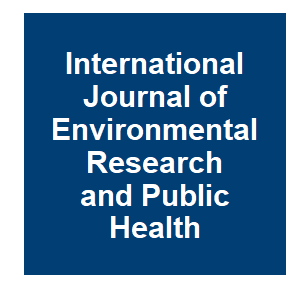
|
Gene Drive for Mosquito Control: Where Did It Come from and Where Are We Headed?Macias, VMO, J. R.; Rasgon, J. L., International Journal of Environmental Research and Public Health, 14:e1006. 2017.
Mosquito-borne pathogens place an enormous burden on human health. The existing toolkit is insufficient to support ongoing vector-control efforts towards meeting disease elimination and eradication goals. The perspective that genetic approaches can potentially add a significant ... Keywords: gene drive review, gene drive synthetic, popular press |
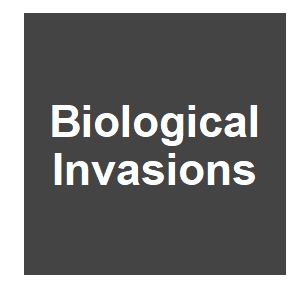
|
Towards the genetic control of invasive speciesHarvey-Samuel, TA, T.; Alphey, L., Biological Invasions, 19:1683-1703. 2017.
Invasive species remain one of the greatest threats to global biodiversity. Their control would be enhanced through the development of more effective and sustainable pest management strategies. Recently, a novel form of genetic pest management (GPM) has been developed in which ... Keywords: gene drive review, gene drive synthetic, popular press |

|
Driving out malariaNolan, TC, A., Scientist, 2017.
In recent years, researchers have sequenced the genomes of several Anopheles mosquito species, including those responsible for nearly all of the malaria transmission in Africa. With this information, they have begun to identify the genes underlying the insects’ ability to ... Keywords: gene drive review, gene drive synthetic, popular press |
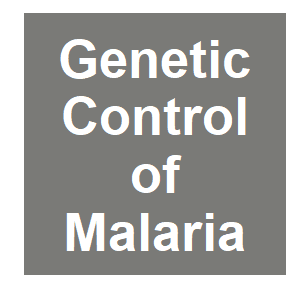
|
Concept and history of genetic controlScott, M. J. and Benedict, M. Q., Genetic Control of Malaria and Dengue, 2:31-54. 2016.
Genetic control of insects is an established method, mainly for insects that are important crop and veterinary pests such as medflies and screwworm. Efforts to use the same technologies against insects of medical importance, especially mosquitoes, have had limited success. The ... Keywords: gene drive review, gene drive synthetic, popular press |
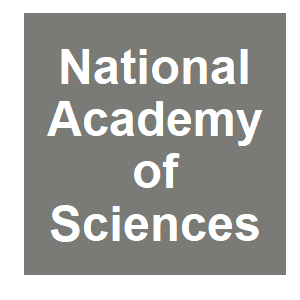
|
Gene Drives on the Horizon: Advancing Science, Navigating Uncertainty, and Aligning Research with Public ValuesU. S. National Academies of Sciences, Engineering, and Medicine, The National Academies Press, 2016.
Scientists have studied gene drives for more than 50 years. The development of a powerful genome editing tool in 2012, CRISPR/Cas9,1 led to recent breakthroughs in gene drive research that built on that half century’s worth of knowledge, and stimulated new discussion of the ... Keywords: gene drive review, gene drive synthetic, popular press |

|
Gene Drives: Saving Lives Or Powering Extinctions?Fw:Thinking, , 2016.
A few months back we talked about the revolutionary gene-editing technique known as CRISPR-Cas9 – a technology based on the bacterial immune system that will allow us to make edits to an organism’s genetic code with more ease and accuracy than ever before. CRISPR is changing ... Keywords: gene drive review, gene drive synthetic, popular press |

|
Gene editing can now change an entire species — foreverTED, , 2016.
CRISPR gene drives allow scientists to change sequences of DNA and guarantee that the resulting edited genetic trait is inherited by future generations, opening up the possibility of altering entire species forever. More than anything, this technology has led to questions: How ... Keywords: gene drive review, gene drive synthetic, popular press |
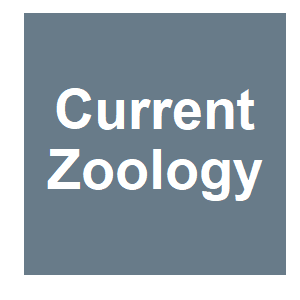
|
Selfish genetic elements and the gene’s-eye view of evolutionÅgren, JA, Current Zoology, 62:659-665. 2016.
During the last few decades, we have seen an explosion in the influx of details about the biology of selfish genetic elements. Ever since the early days of the field, the gene’s-eye view of Richard Dawkins, George Williams, and others, has been instrumental to make sense of new ... Keywords: gene drive review, gene drive synthetic, popular press |

|
Control of mosquito-borne infectious diseases: Sex and gene driveAdelman, ZNT, Z. J., Trends in Parasitology, 32:219-229. 2016.
Sterile male releases have successfully reduced local populations of the dengue vector, Aedes aegypti, but challenges remain in scale and in separating sexes before release. The recent discovery of the first mosquito male determining factor (M factor) will facilitate our ... Keywords: gene drive review, gene drive synthetic, popular press |
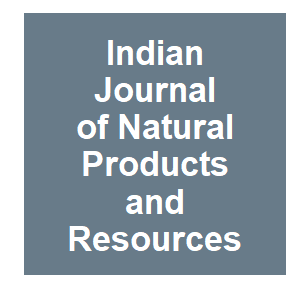
|
Gene silencing and gene drive in dengue vector controlPaulraj, MGI, S.; Reegan, A. D., Indian Journal of Natural Products and Resources, 7:193-200. 2016.
Vector-borne diseases are the most feared diseases throughout the world. Mosquitoes are the prime human disease vectors as they are responsible for nearly one million human deaths every year. So they are declared as the most dangerous insects to mankind. Aedes aegypti and Ae. ... Keywords: gene drive review, gene drive synthetic, popular press |

|
The evolutionary consequences of selfish genetic elementsLindholm, AKP, T. A. R., Current Zoology, 62:655-658. 2016.
The traditional view of the genome was once that it is broadly cooperative, with all genes working together amicably to improve the success of the individual as a whole. Benefits to the individual, after all, benefit all the component genes, as fair Mendelian inheritance ensures ... Keywords: gene drive review, gene drive synthetic, popular press |
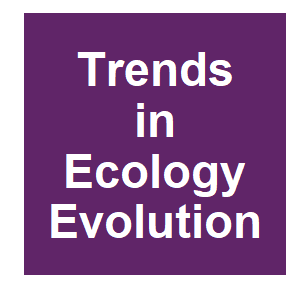
|
The Ecology and Evolutionary Dynamics of Meiotic DriveLindholm, AKD, K. A.; Firman, R. C.; Fishman, L.; Forstmeier, W.; Holman, L.; Johannesson, H.; Knief, U.; Kokko, H.; Larracuente, A. M.; Manser, A.; Montchamp-Moreau, C.; Petrosyan, V. G.; Pomiankowski, A.; Presgraves, D. C.; Safronova, L. D.; Sutter, A.; Unckless, R. L.; Verspoor, R. L.; Wedell, N.; Wilkinson, G. S.; Price, T. A. R., Trends in Ecology & Evolution, 31:315-326. 2016.
Meiotic drivers are genetic variants that selfishly manipulate the production of gametes to increase their own rate of transmission, often to the detriment of the rest of the genome and the individual that carries them. This genomic conflict potentially occurs whenever a diploid ... Keywords: gene drive review, gene drive synthetic, popular press |
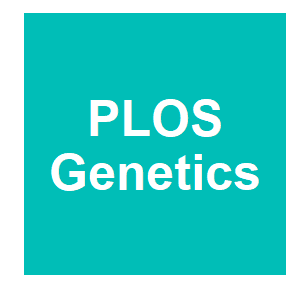
|
R2d2 and hyperdrive mechanisms (in Mouse meiosis)Zanders, SEM, H. S., PLOS Genetics, 11:1-4. 2015.
Mendelian transmission is established during meiosis, the cell division that generates haploidgametes (e.g., sperm and eggs) from diploid germ cells. Meiosis does not, however, have to befair. Selfish genetic elements, or meiotic drivers, have evolved to cheat this process in ... Keywords: gene drive review, gene drive synthetic, popular press |

|
The dynamic relationship between polyandry and selfish genetic elementsWedell, N, Philosophical Transactions of the Royal Society B-Biological Sciences, 368:10. 2013.
Selfish genetic elements (SGEs) are ubiquitous in eukaryotes and bacteria, and make up a large part of the genome. They frequently target sperm to increase their transmission success, but these manipulations are often associated with reduced male fertility. Low fertility of ... Keywords: gene drive review, gene drive synthetic, popular press |
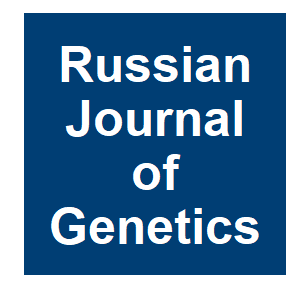
|
Meiotic drive in mice carrying t-complex in their genomeSafronova, LDC, V. L., Russian Journal of Genetics, 49:885-897. 2013.
The deviation of alleles and chromosomes from Mendelian inheritance is characteristic of the meiotic drive. This review describes the mechanism in question using the best-studied example of transmitted ratio distortion in the heterozygous male mice carrying t-haplotypes. The ... Keywords: gene drive review, gene drive synthetic, popular press |
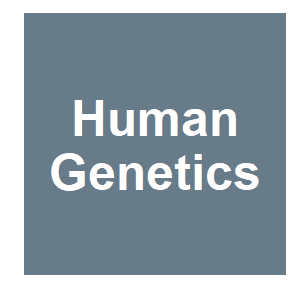
|
Transmission ratio distortion: review of concept and implications for genetic association studiesHuang, LOL, A.; Infante-Rivard, C., Human Genetics, 132:245-263. 2013.
Transmission ratio distortion (TRD) occurs when one of the two alleles from either parent is preferentially transmitted to the offspring. This leads to a statistical departure from the Mendelian law of inheritance, which states that each of the two parental alleles is transmitted ... Keywords: gene drive review, gene drive synthetic, popular press |
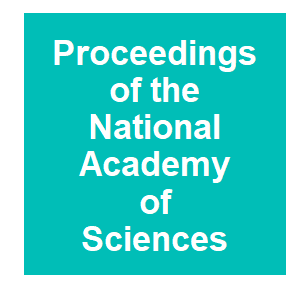
|
Selfish genetic elements, genetic conflict, and evolutionary innovationWerren, JH, Proceedings of the National Academy of Sciences of the United States of America, 108:10863-10870. 2011.
Genomes are vulnerable to selfish genetic elements (SGEs), which enhance their own transmission relative to the rest of an individual's genome but are neutral or harmful to the individual as a whole. As a result, genetic conflict occurs between SGEs and other genetic elements in ... Keywords: gene drive review, gene drive synthetic, popular press |

|
The role of meiotic drive in hybrid male sterilityMcDermott, SRN, M. A. F., Philosophical Transactions of the Royal Society B-Biological Sciences, 365:1265-1272. 2010.
Meiotic drive causes the distortion of allelic segregation away from Mendelian expected ratios, often also reducing fecundity and favouring the evolution of drive suppressors. If different species evolve distinct drive-suppressor systems, then hybrid progeny may be sterile as a ... Keywords: gene drive review, gene drive synthetic, popular press |

|
Genetic strategies for controlling mosquito-borne diseasesF. Gould, K. Magori and Y. Huang, American Scientist, 94:238. 2006.
Malaria kills more than a million people each year, primarily children under the age of six. Dengue fever is less deadly, but an outbreak can debilitate millions of people and easily overwhelm doctors and hospitals in tropical cities. Keywords: gene drive review, gene drive synthetic, popular press |

|
Genetic strategies for controlling mosquito-borne diseasesF. Gould, K. Magori and Y. Huang, American Scientist, 94:238. 2006.
Malaria kills more than a million people each year, primarily children under the age of six. Dengue fever is less deadly, but an outbreak can debilitate millions of people and easily overwhelm doctors and hospitals in tropical cities Keywords: gene drive review, gene drive synthetic, popular press |

|
Gene drive systems for insect disease vectorsSinkins, SPG, F., Nature Reviews Genetics, 7:427-435. 2006.
The elegant mechanisms by which naturally occurring selfish genetic elements, such as transposable elements, meiotic drive genes, homing endonuclease genes and Wolbachia, spread at the expense of their hosts provide some of the most fascinating and remarkable subjects in ... Keywords: gene drive review, gene drive synthetic, popular press |
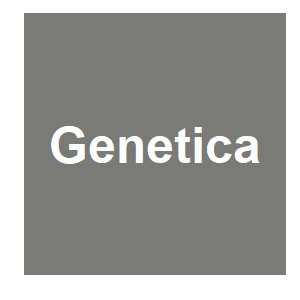
|
Common features of segregation distortion in plants and animalsTaylor, DRI, P. K., Genetica, 117:27-35. 2003.
Segregation distortion is increasingly recognized as a potentially powerful evolutionary force. This runs counter to the perception that non-Mendelian genes are rare genetic curiosities, a view that seems to be supported by the near ubiquity of the Mendelian system of ... Keywords: gene drive review, gene drive synthetic, popular press |
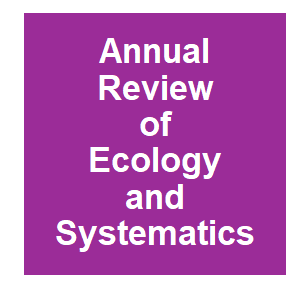
|
Sex chromosome meiotic driveJaenike, J, Annual Review of Ecology and Systematics, 32:25-49. 2001.
Sex chromosome drive refers to the unequal transmission of X and Y chromosomes from individuals of the heterogametic sex, resulting in biased sex ratios among progeny and within populations, The presence of driving sex chromosomes can reduce mean fitness within a population, ... Keywords: gene drive review, gene drive synthetic, popular press |
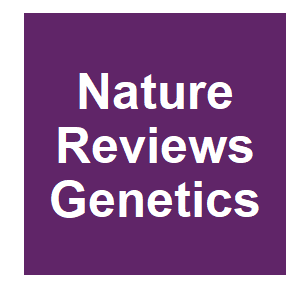
|
The role of selfish genetic elements in eukaryotic evolutionHurst, GDDW, J. H., Nature Reviews Genetics, 2:597-606. 2001.
'Selfish genetic elements', such as transposons, homing endonucleases, meiotic drive chromosomes and heritable microorganisms, are common features of eukaryotes. However, their importance in the evolution of eukaryotic genomes is still controversial. In this review, we discuss ... Keywords: gene drive review, gene drive synthetic, popular press |

|
Nonrandom segregation during meiosis: the unfairness of femalesde Villena, FPMS, C., Mammalian Genome, 12:331-339. 2001.
Most geneticists assume that chromosome segregation during meiosis is Mendelian (i.e., each allele at each locus is represented equally in the gametes). The great majority of reports that discuss non-Mendelian transmission have focused on systems of gametic selection, such as the ... Keywords: gene drive review, gene drive synthetic, popular press |

|
Persistence of selfish genetic elements: population structure and conflictHatcher, MJ, Trends in Ecology & Evolution, 15:271-277. 2000.
Selfish genetic elements are vertically transmitted factors that spread by obtaining a transmission advantage relative to the rest of the genome of their host organism, often with a cost to overall host fitness. In many cases, conventional population genetics theory predicts them ... Keywords: gene drive review, gene drive synthetic, popular press |
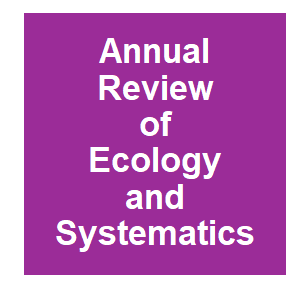
|
Sex determination, sex ratios, and genetic conflictWerren, JHB, L. W., Annual Review of Ecology and Systematics, 29:233-261. 1998.
Genetic mechanisms of sex determination are unexpectedly diverse and change rapidly during evolution. We review the role of genetic conflict as the driving force behind this diversity and turnover. Genetic conflict occurs when different components of a genetic system are subject ... Keywords: gene drive review, gene drive synthetic, popular press |

|
Selfish genes and meiotic driveHurst, LD, Nature, 391:223-223. 1998.
Work by Gerald Wilkinson and colleagues3 on stalk-eyed flies (Diopsidae), described on page 276, provides the strongest evidence to date about the nature of some of the genes females prefer. As their name suggests, stalk-eyed flies have their eyes perched on the end of ... Keywords: gene drive review, gene drive synthetic, popular press |

|
Selfish genetic elements and speciationHurst, GDDS, M., Heredity, 80:2-8. 1998.
This review concerns the importance of selfish genetic elements (SGEs) in speciation. We assess the importance of medea genes, meiotic drive elements, transposable elements and the bacterium Wolbachia in the creation of postzygotic isolation. Although all of these elements can ... Keywords: gene drive review, gene drive synthetic, popular press |

|
Meiotic drive in female mice: An essayRuvinsky, A, Mammalian Genome, 6:315-320. 1995.
Since the rediscovery of Mendel's laws, geneticists have accumulated various examples in which equal meiotic segregation in heterozygotes is violated. However, only a few natural meiotic drive systems have been characterized in detail and the majority of these are sex chromosome ... Keywords: gene drive review, gene drive synthetic, popular press |

|
Ascoycete spore killers: Chromosomal elements that distort genetic ratios among the products of meiosisRaju, NB, Mycologia, 86:461-473. 1994.
Spore killers (Sk), studied most extensively in Neurospora, are also known in Podospora, Gibberella and Cochliobolus. Spore killers are no doubt present in natural populations of other fungi. Criteria are outlined here for recognizing their presence and distinguishing them from ... Keywords: gene drive review, gene drive synthetic, popular press |

|
Selfish DNA as method of pest controlHastings, IM, Philosophical Transactions of the Royal Society B-Biological Sciences, 344:313-324. 1994.
The inheritance of most genes is tightly controlled, governed by the rules of mendelian inheritance if nuclear or uniparental inheritance if cytoplasmic. A few notable genes and cytoplasmic genomes have escaped this regulation. Such genes may spread by increasing their own rate ... Keywords: gene drive review, gene drive synthetic, popular press |

|
The peculiar journey of a selfish chromosome: Mouse t-haplotypes and meiotic driveSilver, LM, Trends in Genetics, 9:250-254. 1993.
Mouse t haplotypes are descendents of a variant form of chromosome 17 that evolved the ability to propagate itself at the expense of the wild-type homolog from heterozygous +/t males. Although once enigmatic, these widespread selfish chromosomes have revealed many of their ... Keywords: gene drive review, gene drive synthetic, popular press |
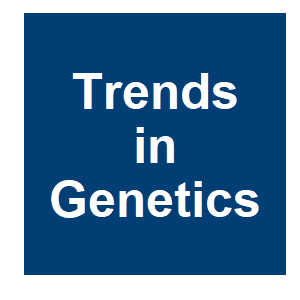
|
Cheaters sometimes prosper: Distortion of Mendelian segregation by meiotic driveLyttle, TW, Trends in Genetics, 9:205-210. 1993.
Two of Mendel's three laws were quickly discarded as information on the organization and transmission of genes accumulated at the beginning of this century, but bis law of segregation has shown remarkable staying power. In fact, within most of population genetic theory for sexual ... Keywords: gene drive review, gene drive synthetic, popular press |

|
Meiotic drive in Neurospora and other fungiTurner, BCP, D. D., American Naturalist, 137:416-429. 1991.
When a gene complex called Spore killer is heterozygous, ascospores representing two of the four products of each meiosis are killed. Only those that receive the killer complex survive. This article reviews what is known of the mode of action of the Neurospora Spore killers, ... Keywords: gene drive review, gene drive synthetic, popular press |

|
Extraordinary sex ratiosW. D. Hamilton, Science, 156:477-488. 1967.
The two sexes are usually produced in approximately equal numbers. Fisher (1) was the first to explain why, under natural selection, this should be so, irrespective of the particular mechanism of sex determination. His rather tersely expressed argument has been clarified by ... Keywords: gene drive review, gene drive synthetic, popular press |

|
Aanalysis of case of meiotic drive in Drosophila melanogasterHanks, GD, Genetics, 50:123-130. 1964.
IN the past ten years there has been a renewed interest in the abnormal recovery of chromosomes after meiosis; see for example DUNN (1953); NOVITSKI and SANDLER (1957) ; SANDLER and NOVITSKI ( 1957) ; LINDSLEY and SANDLER (1958); NOVITSKI and HANKS (1961); and MAGUIRE (1963). ... Keywords: gene drive review, gene drive synthetic, popular press |

Contact
David O’Brochta
Foundation for the
National Institutes of Health
geneconvenevi@fnih.org
RSS

